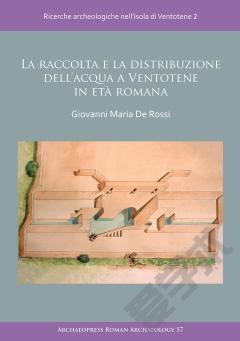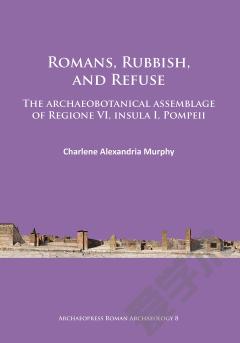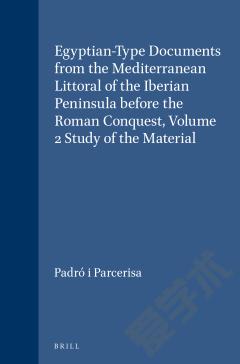La raccolta e la distribuzione dell’acqua a Ventotene in età romana —— Ricerche archeologiche nell’isola di Ventotene 2
----- 罗马时期文托滕的水的收集和分配
La raccolta e la distribuzione dell’acqua a Ventotene in età romana is presented in two parts. The first examines the topographical and technical problem of the water supply on the island of Ventotene, where there is an absence of natural springs. The second, consisting of separate entries, analyses the individual components of the water supply system built by the Romans on the island. The Roman installation developed in two phases alongside changes in life at the villa located at Ventotene: the first connected to a residence used for otium, the second to an official site of relegatio ad insulam. The Roman architect exploited the island’s natural slope to collect rainwater in a large initial reservoir, later known as the ‘Cistern of the Prisoners’, surmounted by a vast catchment basin: from here a conduit departed which, through various branches, reached the ‘heart’ of the villa extending over the promontory of Punta Eolo and the port facilities. The water was channelled from the cistern by an extensive network of tunnels, dug, depending on the height, either wholly or partially into the tufa or built on the surface. Even during the second phase, when the villa was turned into a large and elaborate residential complex used throughout the year, it could rely only on rainwater as a resource. The Roman architect was thus forced to increase the collection areas, attempting to capture as much water as possible. This was achieved by increasing the number of large initial collection tanks, dislocating them strategically around the island to ensure that each of the sectors with the highest residential density and main infrastructure installations had its own independent resource alongside the standard existing resources. The number of catchment basins also multiplied considerably along the route of the main conduit and its branches.|La raccolta e la distribuzione dell’acqua a Ventotene in età romana si compone di due parti. Nella prima viene esaminato il problema topografico e tecnico relativo all’approvvigionamento idrico dell’isola di Ventotene, in rapporto alla sostanziale assenza di sorgenti d’acqua. Nella seconda, composta di schede, si analizzano le singole componenti del sistema idrico costruito dai Romani nell’isola. L’impianto romano va inserito nelle due fasi di vita della villa realizzata a Ventotene: la prima legata a una residenza per l’otium, la seconda a una sede ufficiale per la relegatio ad insulam. L’architetto romano sfruttò il naturale pendio dell’isola per raccogliere acqua piovana in un grande serbatoio iniziale, poi detto “Cisterna dei Carcerati”, sormontato da un vastissimo compluvio di raccolta: da qui partiva un condotto che raggiungeva, con varie diramazioni, il “cuore” della villa distesa sul promontorio di Punta Eolo e gli impianti portuali. Lo smistamento dell’acqua dal serbatoio venne affidato a una capillare rete di cunicoli, scavati, a seconda delle quote, interamente o parzialmente nel tufo oppure costruiti in superficie. Per aumentare notevolmente la quantità d’acqua messa a disposizione dell’impianto, si realizzarono lungo i condotti abbinamenti formati da compluvi di superficie e cisterne di raccolta. Potendo contare, anche per la seconda fase, in cui però la villa era stata trasformata in un grande e articolato complesso residenziale da utilizzarsi per tutto l’anno, sulla sola risorsa delle piogge, all’architetto romano di turno non rimase che l’espediente di aumentare i punti di raccolta, cercando così di captare la maggior quantità possibile di acqua. Le carte vincenti di questa sfida furono due: aumentare il numero dei grandi serbatoi iniziali di raccolta, dislocandoli strategicamente nell’isola così da garantire, ai settori di maggior densità residenziale e alle principali infrastrutture, risorse autonome da aggiungere a quelle di base già esistenti; moltiplicare, e di molto, i compluvi lungo le direttrici del condotto principale e delle sue diramazioni.
{{comment.content}}








 京公网安备 11010802027623号
京公网安备 11010802027623号